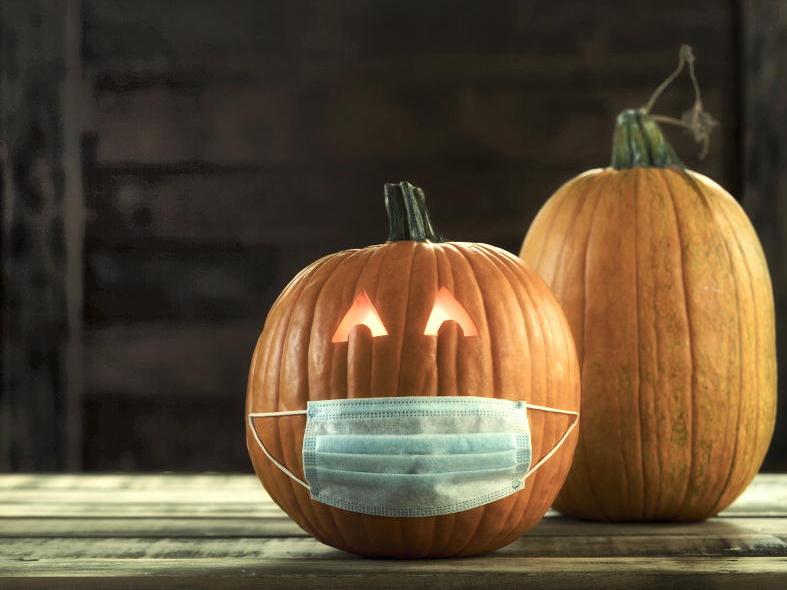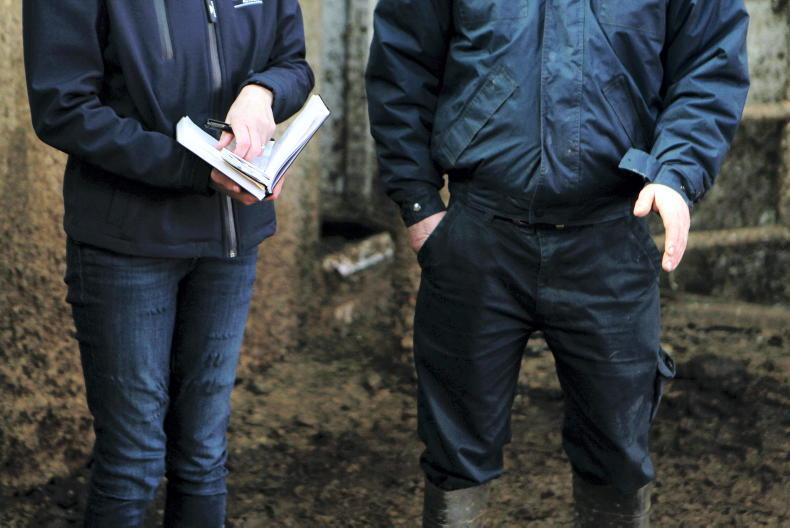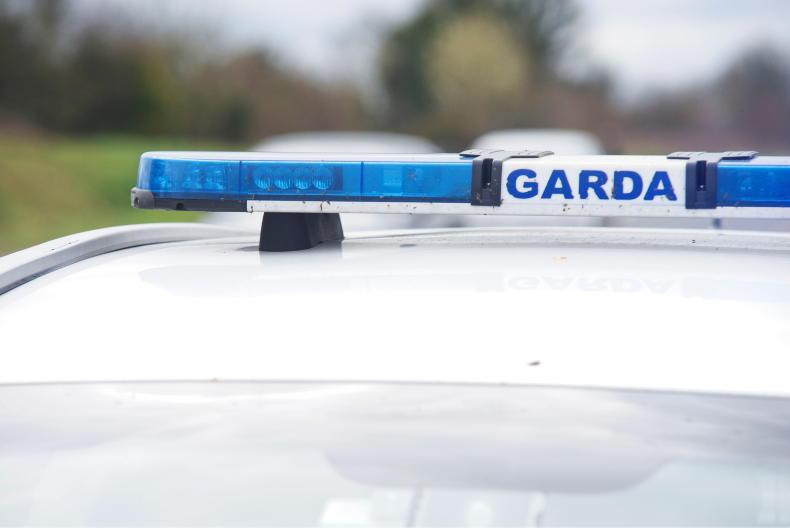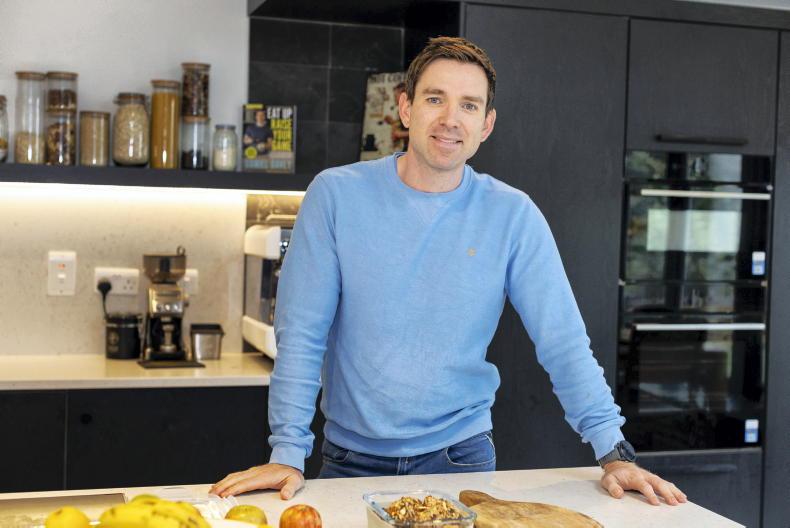Skeletons walking the streets, witches casting spells, children dressing up – Halloween can be a fun time for families, but it’s wise to be health and safety aware so there are no minor or major accidents to recover from when the midterm is over.
If you are going to be out and about trick or treating this year, or you are simply celebrating at home with family, here is some ghoulishly good advice from the organisations that help in times of crisis.
1 Check the label – Look for the CE mark when buying children’s costumes and costume accessories. Costumes should be flame resistant.
2 Choking risk – Be aware of choking risks for small children. Some Halloween props may not be safe for them.
3 Make sure the costume fits – Your child could trip or fall if their costume is too big for them. Avoid over-sized shoes, high heels, long dresses and long capes.
4 Masks and makeup – Masks can make it difficult for your child to see, hear and breathe properly. Try using non-toxic face paint instead, but make sure it has the CE mark. Check the label for any warnings and the list of ingredients. Make sure your child is not allergic or sensitive to the face paint. Do a patch test on leg or arm beforehand.
5 Sharp objects – Make sure Halloween props, like swords, carry the CE mark. Remember, sharp objects can cause eye injuries during play.
Choking hazards
Choking is a very common danger to children. Sweets, nuts and other foods could cause your child to choke. Wait until returning home from trick and treating before your child starts eating treats. Be sure to offer some healthier options, too. Children can choke on:
Popcorn.Marshmallows.Boiled and hard sweets.Chewing gum.Nuts (also beware of allergies).Hard vegetables, whole fruits and vegetables.Balloons, sparklers and lighting
Balloons can also be a choking risk for children. Only adults should blow up balloons.
Children should never hold lit sparklers. They can burn at very high temperature (six times hotter than a hot frying pan) and they will not go out even if you use water.
Use battery-operated candles instead of normal ones. Also check that any decorative Halloween lights that you buy bear the CE mark.
In the unfortunate event of your child’s clothes catching fire, get them to:
Drop to the ground, covering their face with their hands.Roll on the ground until the fire is out.If they cannot do this, smother the flames with a blanket or towel.If their skin gets burnt, hold the burnt skin under a cool running tap for 20 minutes.Keep the rest of the child’s body warm while you are cooling the burnt area to prevent hypothermia.Phone 999 or 112 in emergency.Be seen
The evenings are shorter and darker at this time of year so be sure you can be seen by motorists. Wear reflective armbands and/or tape added to outfits and bags to ensure visibility. Be careful when crossing road.
Trick or treating
Supervision and safety are paramount. Children should always be accompanied by an adult. Take a torch. Avoid dogs as they may be frightened by fireworks. Avoid knocking on the doors of elderly neighbours.
Bonfires and fireworks
The use and purchase of fireworks in Ireland are illegal. Never approach a firework that has failed to go off. Know how to treat a burn. Keep a safe distance from bonfires at all times. Keep pets indoors.
Mind your eyes at Halloween
Halloween is one of the biggest nights of the year for children but unfortunately it is also one of the busiest nights for hospital A&E’s around the country as a result of (often preventable) accidents, says a spokesperson from the Irish College of Opthalmologists (ICO).
“We all want our children to enjoy fun and games with friends and family at Halloween, but some safety precautions can help to prevent avoidable incidents,” says Dr Kathryn McCreery, eye surgeon at Our Lady’s Hospital for Sick Children, Crumlin.
“The eyes can be very exposed to potential risks at Halloween.
“Parents should use their best judgment in terms of age appropriateness in relation to fireworks, bonfires and sharp Halloween costume accessories. They should ensure supervision of young children who may be unaware of any risk,.
“Halloween masks can limit a child’s visibility so ensure the eye holes are in the correct position and the mask is secure, especially if your child is very young. A child should be able to see their peripheral vision while wearing the mask so their view isn’t obstructed when running or crossing the road.”
And although popular with teenagers and even adults for Halloween fancy dress parties, the ICO also advises caution in relation to illegal cosmetic contact lenses use.
“These lenses can unfortunately lead to eye infections if not sterilised properly, worn for any extended period of time or fitted incorrectly, and can lead to sight damage in the most severe cases when infection or damage to the eye is left untreated,” explains Dr McCreery.
Other eye injuries that eye doctors in emergency departments have to deal with on a busy Halloween night include:
Foreign objects that get under the eye lids.Bruising of the eyes and infections as a result of poor removal of children wearing makeup. Care tips
Use hypoallergenic makeup remover for children’s sensitive eyes.To cleanse the eyes, use cooled boiled water with salt. Old makeup is a breeding group for bacteria and eye germs can be swapped between children who share makeup applicators and products.Public Health Northern Ireland - they advise not bobbing for apples and not sharing food or sweets as this increases the risk of spreading COVID-19.
Garda Halloween safety video - don’t let the messing go too far, gardaí and fire officers say in this video which you can find by searching: “Garda Press Office Halloween Safety Message”
Dr Lean McMorrow of Dental Care Ireland has these toothy tips this Halloween:
1 Filter the feast – Try to avoid treats that tend to linger in the mouth, such as sticky sweets. The length of time sugary food stays in your child’s mouth can affect tooth decay. A plain chocolate bar is a better option.
2 Restrict treat frequency – Try to limit sweet treats to mealtimes, such as straight after dinner. Saliva production increases during meals, which helps rinse away sugary food particles and can reduce the risk of cavities.
3 Drink water – Drinking water after Halloween treats will help to dilute any acid attacks caused by sugary snacks. Try to avoid carbonated drinks.
4 Try a mouth-cleanser – A small piece of cheese eaten after a treat will help return the mouth to its natural acid balance and reduce the chances of developing tooth decay. Alternatively, eating crunchy fruits and vegetables such as carrots, apples and celery will stimulate production of saliva, which in turn helps to wash away sugary foods.
5 Schedule a check-up.
Budget 2021 changes to health
Free GP care is to be extended to children aged six and seven. The threshold for the drugs payment scheme has been lowered, meaning the maximum someone will pay for approved prescribed drugs will be €100.Access to free contraception for women aged 17-25 from August 2022.Funding of €500m for COVID-19 measures such as testing/tracing and vaccination.€105m for disability services, including supports for school leavers and those with disability inappropriately living in nursing homes. €24m for the expansion of mental health services.Increased access to dental care for medical card holders.Additional funding for sexual assault treatment units. Over 65? Make your bone health a priority
In 2019, almost 4,000 people were hospitalised for osteoporosis related hip fractures in Ireland, of which 69% were females.
Ireland has the sixth highest rate of hip fragility fractures (breaks) in the world and research is showing that the treatment gap for the silent disease is widening across the country.
Irish Osteoporosis Society Ambassador and TV presenter Mary Kennedy is encouraging women to start thinking about protecting their bone health:
“I had never given much thought to my bone health until I learned about the risks, particularly to women my own age, over 65. There are some simple steps to take to help protect your bones. For example, every day, I make sure that I take the daily recommended amounts of calcium and vitamin D and I also try to ensure I get my 5-a-day when it comes to fruit and vegetables. Regular exercise is part of my daily routine.
I like to get out for a walk almost every day. I would encourage all women to speak to their GP about potential risk factors and steps that can be taken to help protect bone health or visit the Irish Osteoporosis Society website.”
irishosteoporosis.ie for up-to-date advice on how to protect your bones. The ‘She Doesn’t Deserve A Break’ campaign is associated with the Irish Osteoporosis Society and organised by Amgen.
Skeletons walking the streets, witches casting spells, children dressing up – Halloween can be a fun time for families, but it’s wise to be health and safety aware so there are no minor or major accidents to recover from when the midterm is over.
If you are going to be out and about trick or treating this year, or you are simply celebrating at home with family, here is some ghoulishly good advice from the organisations that help in times of crisis.
1 Check the label – Look for the CE mark when buying children’s costumes and costume accessories. Costumes should be flame resistant.
2 Choking risk – Be aware of choking risks for small children. Some Halloween props may not be safe for them.
3 Make sure the costume fits – Your child could trip or fall if their costume is too big for them. Avoid over-sized shoes, high heels, long dresses and long capes.
4 Masks and makeup – Masks can make it difficult for your child to see, hear and breathe properly. Try using non-toxic face paint instead, but make sure it has the CE mark. Check the label for any warnings and the list of ingredients. Make sure your child is not allergic or sensitive to the face paint. Do a patch test on leg or arm beforehand.
5 Sharp objects – Make sure Halloween props, like swords, carry the CE mark. Remember, sharp objects can cause eye injuries during play.
Choking hazards
Choking is a very common danger to children. Sweets, nuts and other foods could cause your child to choke. Wait until returning home from trick and treating before your child starts eating treats. Be sure to offer some healthier options, too. Children can choke on:
Popcorn.Marshmallows.Boiled and hard sweets.Chewing gum.Nuts (also beware of allergies).Hard vegetables, whole fruits and vegetables.Balloons, sparklers and lighting
Balloons can also be a choking risk for children. Only adults should blow up balloons.
Children should never hold lit sparklers. They can burn at very high temperature (six times hotter than a hot frying pan) and they will not go out even if you use water.
Use battery-operated candles instead of normal ones. Also check that any decorative Halloween lights that you buy bear the CE mark.
In the unfortunate event of your child’s clothes catching fire, get them to:
Drop to the ground, covering their face with their hands.Roll on the ground until the fire is out.If they cannot do this, smother the flames with a blanket or towel.If their skin gets burnt, hold the burnt skin under a cool running tap for 20 minutes.Keep the rest of the child’s body warm while you are cooling the burnt area to prevent hypothermia.Phone 999 or 112 in emergency.Be seen
The evenings are shorter and darker at this time of year so be sure you can be seen by motorists. Wear reflective armbands and/or tape added to outfits and bags to ensure visibility. Be careful when crossing road.
Trick or treating
Supervision and safety are paramount. Children should always be accompanied by an adult. Take a torch. Avoid dogs as they may be frightened by fireworks. Avoid knocking on the doors of elderly neighbours.
Bonfires and fireworks
The use and purchase of fireworks in Ireland are illegal. Never approach a firework that has failed to go off. Know how to treat a burn. Keep a safe distance from bonfires at all times. Keep pets indoors.
Mind your eyes at Halloween
Halloween is one of the biggest nights of the year for children but unfortunately it is also one of the busiest nights for hospital A&E’s around the country as a result of (often preventable) accidents, says a spokesperson from the Irish College of Opthalmologists (ICO).
“We all want our children to enjoy fun and games with friends and family at Halloween, but some safety precautions can help to prevent avoidable incidents,” says Dr Kathryn McCreery, eye surgeon at Our Lady’s Hospital for Sick Children, Crumlin.
“The eyes can be very exposed to potential risks at Halloween.
“Parents should use their best judgment in terms of age appropriateness in relation to fireworks, bonfires and sharp Halloween costume accessories. They should ensure supervision of young children who may be unaware of any risk,.
“Halloween masks can limit a child’s visibility so ensure the eye holes are in the correct position and the mask is secure, especially if your child is very young. A child should be able to see their peripheral vision while wearing the mask so their view isn’t obstructed when running or crossing the road.”
And although popular with teenagers and even adults for Halloween fancy dress parties, the ICO also advises caution in relation to illegal cosmetic contact lenses use.
“These lenses can unfortunately lead to eye infections if not sterilised properly, worn for any extended period of time or fitted incorrectly, and can lead to sight damage in the most severe cases when infection or damage to the eye is left untreated,” explains Dr McCreery.
Other eye injuries that eye doctors in emergency departments have to deal with on a busy Halloween night include:
Foreign objects that get under the eye lids.Bruising of the eyes and infections as a result of poor removal of children wearing makeup. Care tips
Use hypoallergenic makeup remover for children’s sensitive eyes.To cleanse the eyes, use cooled boiled water with salt. Old makeup is a breeding group for bacteria and eye germs can be swapped between children who share makeup applicators and products.Public Health Northern Ireland - they advise not bobbing for apples and not sharing food or sweets as this increases the risk of spreading COVID-19.
Garda Halloween safety video - don’t let the messing go too far, gardaí and fire officers say in this video which you can find by searching: “Garda Press Office Halloween Safety Message”
Dr Lean McMorrow of Dental Care Ireland has these toothy tips this Halloween:
1 Filter the feast – Try to avoid treats that tend to linger in the mouth, such as sticky sweets. The length of time sugary food stays in your child’s mouth can affect tooth decay. A plain chocolate bar is a better option.
2 Restrict treat frequency – Try to limit sweet treats to mealtimes, such as straight after dinner. Saliva production increases during meals, which helps rinse away sugary food particles and can reduce the risk of cavities.
3 Drink water – Drinking water after Halloween treats will help to dilute any acid attacks caused by sugary snacks. Try to avoid carbonated drinks.
4 Try a mouth-cleanser – A small piece of cheese eaten after a treat will help return the mouth to its natural acid balance and reduce the chances of developing tooth decay. Alternatively, eating crunchy fruits and vegetables such as carrots, apples and celery will stimulate production of saliva, which in turn helps to wash away sugary foods.
5 Schedule a check-up.
Budget 2021 changes to health
Free GP care is to be extended to children aged six and seven. The threshold for the drugs payment scheme has been lowered, meaning the maximum someone will pay for approved prescribed drugs will be €100.Access to free contraception for women aged 17-25 from August 2022.Funding of €500m for COVID-19 measures such as testing/tracing and vaccination.€105m for disability services, including supports for school leavers and those with disability inappropriately living in nursing homes. €24m for the expansion of mental health services.Increased access to dental care for medical card holders.Additional funding for sexual assault treatment units. Over 65? Make your bone health a priority
In 2019, almost 4,000 people were hospitalised for osteoporosis related hip fractures in Ireland, of which 69% were females.
Ireland has the sixth highest rate of hip fragility fractures (breaks) in the world and research is showing that the treatment gap for the silent disease is widening across the country.
Irish Osteoporosis Society Ambassador and TV presenter Mary Kennedy is encouraging women to start thinking about protecting their bone health:
“I had never given much thought to my bone health until I learned about the risks, particularly to women my own age, over 65. There are some simple steps to take to help protect your bones. For example, every day, I make sure that I take the daily recommended amounts of calcium and vitamin D and I also try to ensure I get my 5-a-day when it comes to fruit and vegetables. Regular exercise is part of my daily routine.
I like to get out for a walk almost every day. I would encourage all women to speak to their GP about potential risk factors and steps that can be taken to help protect bone health or visit the Irish Osteoporosis Society website.”
irishosteoporosis.ie for up-to-date advice on how to protect your bones. The ‘She Doesn’t Deserve A Break’ campaign is associated with the Irish Osteoporosis Society and organised by Amgen.









SHARING OPTIONS